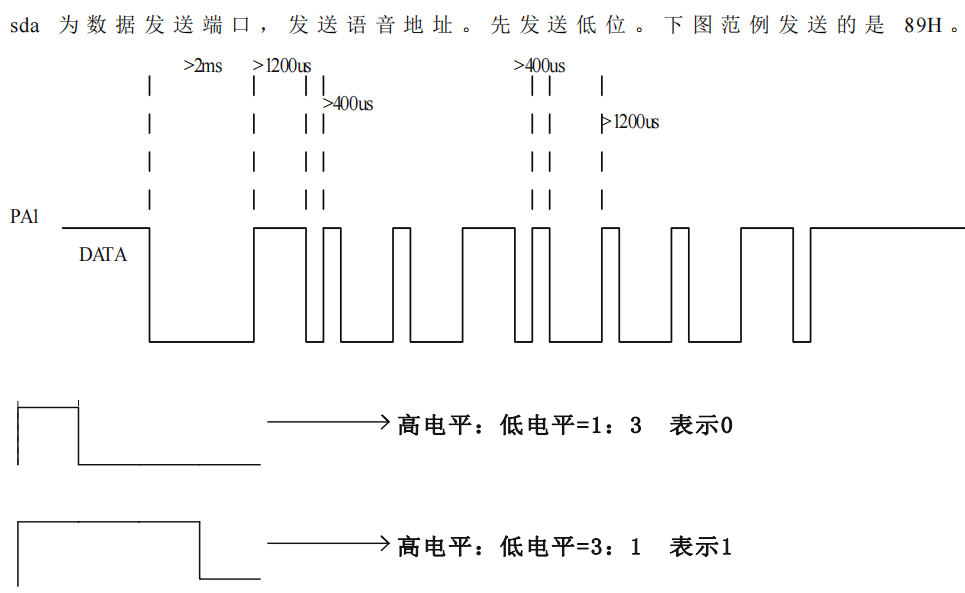JQ8900-16P Voice Broadcast Module
Module Source
Purchase Link:
https://detail.tmall.com/item.htm?abbucket=14&id=675208461122&ns=1&spm=a230r.1.14.18.65ae7e4dI4EsdY
Baidu Netdisk Download Link:
https://pan.baidu.com/s/1ezWnXA2AwmG_rIj30-fcjg?pwd=q5nd
Password:q5nd
Specifications
Input Voltage: 2.8V-5.5V
IO Voltage: 3.3V (module pin output voltage)
Rated Current: 500uA~10mA
Control Method: Serial
View Information
This chip's greatest advantage is its flexibility in replacing the voice content stored in the SPI-flash. This eliminates the need for traditional voice chips, which require a host computer to change the voice. The SPI FLASH can be directly simulated as a USB drive, making it as easy as copying files to a USB drive, which is highly convenient. This simplifies product development and production. The chip offers both serial control modes: RX232 serial control, providing more options for development.
By connecting the USB data cable to the chip and plugging it into a computer, the computer will automatically recognize the device, as shown in the figure below. The chip comes preloaded with 10 voice files.
Note: The voice content should not be too long to avoid running out of memory.
The module has separate IO control, one-wire serial control, and two-wire serial control.
Separate IO Control
If you need to update the voice, simply copy the desired sound and name it according to the specified format. Name the files with 5-digit numbers, such as 00001, 00002...00007.
One-wire serial control

Two-wire serial control
The baud rate is 9600, data bits: 8, stop bits: 1, parity: None.
Hardware Interface
Usage Method
/******************************************************************************
* Test Hardware: LCSC ColorEasyDuino Development Board
* Version Number: V1.0
* Modified By: www.lckfb.com
* Modification Date: April 18, 2024
* Function Overview:
*****************************************************************************
* Open-source development board hardware and software information and related projects hardware and software information on official website
* Development board official website: www.lckfb.com
* Technical support resident forum, any technical problems are welcome at any time to exchange learning
* LCSC Forum: club.szlcsc.com
* Follow our Bilibili account: [立创开发板], stay toned to our latest news!
* We focus on cultivating Chinese engineers rather than profiting from board sales.
******************************************************************************/
#include <SoftwareSerial.h>
// 定义软件串行端口的RX和TX引脚
SoftwareSerial mySerial(10, 11); // RX, TX,可以根据实际情况调整引脚号
void setup() {
// 打开软件串行通信和硬件串行通信
mySerial.begin(9600);
Serial.begin(9600);
// 发送播放第一条音轨的命令
playTrack(5);
}
void loop() {
// 在这里放入你的主代码
}
void playTrack(uint8_t track) {
// 播放指定的音轨
mySerial.write((uint8_t)0xAA); // 命令前缀
mySerial.write((uint8_t)0x07); // 播放命令
mySerial.write((uint8_t)0x02); // 参数长度
mySerial.write((uint8_t)0x00); // 高位
mySerial.write(track); // 低位,指定要播放的音轨
mySerial.write(0xAA + 0x07 + 0x02 + 0x00 + track); // 校验和
}2
3
4
5
6
7
8
9
10
11
12
13
14
15
16
17
18
19
20
21
22
23
24
25
26
27
28
29
30
31
32
33
34
35
36
37
38
39
40
41
Usage Testing
The audio will play when it's connected to the speakers.